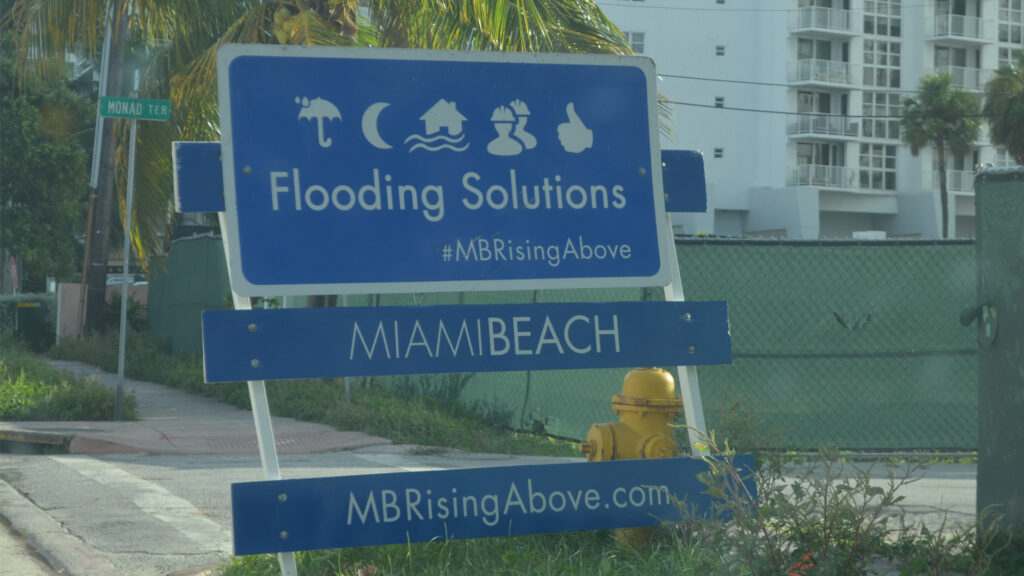By Kristan Reynolds, The Invading Sea
Millions of coastal residents could experience monthly flooding of essential infrastructure by mid-century, according to a new study by the Union of Concerned Scientists.
The analysis found that by the year 2050, nearly 1,100 critical infrastructure assets along the U.S. coastline would flood 12 times per year on average, or the equivalent of once a month, assuming a medium rate of sea level rise. These critical assets include health care facilities and wastewater treatment plants — as well as affordable housing, which was found to be at the highest risk.

Facilities along coastlines are “at risk because sea level rise is going to be increasing the frequency and extent of flooding that happens during high tides,” said Kristina Dahl, principal climate scientist at the Union of Concerned Scientists. “Those assets are located currently in communities that are home to about 3 million people, so this is something that is going to be affecting a large number of people (in) a large number of places.”
Not all communities are exposed to flooding equally: The analysis found that disadvantaged communities that have experienced historical and ongoing discrimination and racism were found to have twice as much infrastructure at risk per capita compared to other communities.
“You can imagine that flooding, any of these kinds of pieces of critical infrastructure will have an impact on the functioning of a community, whether it’s the ability to trust that the water at the beach is clean for you to wade or swim in, or whether you can trust that you can turn the lights on whenever you want,” Dahl said.
The amount of disruptive flooding seen by 2100 will be highly dependent on emission levels that fuel climate change, the study found. It emphasized the importance of urgent action from policymakers to protect coastal infrastructure and for countries to reduce the amount of infrastructure at risk in the future by cutting heat-trapping emissions.
“When we look nationally at 2100 in a high sea level rise scenario, there are more than 15,000 critical infrastructure assets at risk nationwide — that’s an enormous number,” Dahl said. “If we look at the low scenario in which sea level rise is minimized, there are only about 3,500 assets at risk – so, looking at four to five times the amount of risk between the low and the high scenario.”
Florida is one of the states with the highest number of assets at risk within the studied timeframe, according to the analysis.
“I don’t think it’s so much of a future issue; This is a present issue,” said Yoca Arditi-Rocha, executive director of the Miami-based CLEO Institute. “It is a clear, present danger now, costing Floridians their lives, costing Floridians millions and millions of dollars.”
In 2100 in Florida, a high sea level rise scenario would put about 4,600 critical infrastructure assets at risk, and a low sea level rise scenario would result in less than 400 assets exposed, the study found.
The study also notes that the city of Miami regularly experiences high-tide flooding and is at severe risk for sea level rise impacts.

Miami-Dade County’s Office of Resilience is working alongside state and federal departments and coordinating with communities in order to provide relief and resilience measures for current and future impacts of climate change, according to members of that office.
Recently, the office drafted a resilience plan with the U.S. Army Corps of Engineers that prioritizes low- to moderate-income communities. In contrast, traditional studies of the costs and benefits of such work had put more value on higher-value properties or neighborhoods, said Christian Kamrath, adaptation program manager for Miami-Dade County’s Office of Resilience.
“In this case, we actively worked with the Corps and we’re really grateful that we’re able to put together this initial set of projects and plans to do things like elevate homes, or flood proof businesses and other buildings in the same neighborhoods that are at the highest risk and would have the hardest time bouncing back or recovering after a storm,” Kamrath said.
Miami-Dade County Mayor Daniella Levine Cava said in a statement that the community must address sea level rise and flooding by hardening infrastructure, implementing nature-based solutions and developing strategically in less vulnerable areas, like higher ground.
“The recent rain event here in South Florida showed us that even an unnamed storm can have severe impact because the groundwater is so close to the surface,” Levine Cava said. “We need to co-create solutions with community input and build for a future ready Miami-Dade.”
While the state of Florida has invested millions of dollars in resilience and adaptation efforts, some argue that the state government has been ignoring the mitigation aspect.
“We have to continue investing in decarbonizing our economy and moving into a clean energy transition economy,” Arditi-Rocha said.
Kristan Reynolds is a Florida Atlantic University senior majoring in multimedia journalism and minoring in communication studies who is reporting for The Invading Sea during the summer 2024 semester.
Sign up for The Invading Sea newsletter by visiting here. If you are interested in submitting an opinion piece to The Invading Sea, email Editor Nathan Crabbe at ncrabbe@fau.edu.



